
Update: Diurnal variation in gas exchange: the balance between carbon fixation and water loss
Plant Physiology, Plant Physiology: Updates0 Comments
/
Stomatal control of transpiration is critical for maintaining important processes, such as plant water status, leaf temperature, as well as permitting sufficient CO2 diffusion into the leaf to maintain photosynthetic rates (A). Stomatal conductance (gs) often closely correlates with A and is thought…
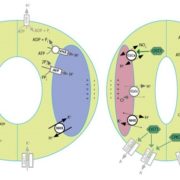
Update: Ion transport at the vacuole during stomatal movement
Plant Physiology, Plant Physiology: Updates, Plant Science Research Weekly, ResearchGas exchange and transpiration are regulated by the stomatal aperture, which is itself regulated by the changes in volume of the guard cells that overlay the stomatal pore. When triggered to open, solutes such as K+ and Cl– enter the guard cell through ion transporters, followed osmotically by water;…
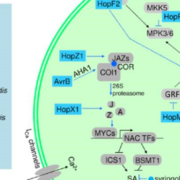
Update: Stomatal defense a decade later
Plant Physiology, Plant Physiology: Updates, Plant Science Research Weekly, ResearchStomatal defense, recognition of pathogens at the stomatal pore accompanied by stomatal closure to prevent their entry, was discovered ten years ago. Melotto et al. review what we’ve learned in the past decade about this key defense strategy. They discuss pathogen recognition, in which microbe-associated…
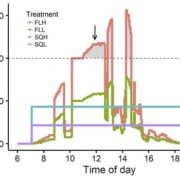
Developmental Responses to Fluctuating Light Regimes
Blog, Plant Physiology, Plant Physiology: Updates, Research, Research BlogPlants in nature experience a range of light intensities and spectral properties due to changes in sun angle and cloud cover in addition to shading from overlapping leaves and neighboring plants. Therefore, leaves are subjected to spatial and temporal gradients in incident light, which has major consequences…

Update: Temporal dynamics of stomatal behaviour: modelling,and implications for photosynthesis and water use
Plant Physiology: Updates, ResearchStomata control gaseous exchange between the leaf and bulk atmosphere limiting CO2 uptake for photosynthesis and water loss by transpiration, and therefore determine plant productivity and water use efficiency. In order to function efficiently, stomata must respond to internal and external signals to…
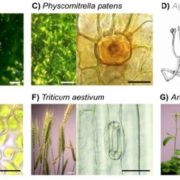
Update: Origins and evolution of stomatal development
Plant Physiology, Plant Physiology: Updates, ResearchThe fossil record suggests stomata-like pores were present on the surfaces of land plants over 400 million years ago. Whether stomata arose once or whether they arose independently across newly evolving land plant lineages has long been a matter of debate. In Arabidopsis, a genetic toolbox has been identified…

Update: Transitory starch metabolism in guard cells: unique features for a unique function
Plant Physiology, Plant Physiology: Updates, ResearchThis Update focuses on the starch that accumulates in the guard cells that control stomatal pore size and thus the exchange of water vapor, CO2 and O2 between the leaf and the atmosphere. Transitory starch in these cells plays a key role in determining the velocity of stomatal opening in the light. This…

Update: Winter Memory throughout the Plant Kingdom: Different Paths to Flowering
Plant Physiology, Plant Physiology: Updates, ResearchPlants have evolved a variety of mechanisms to synchronize flowering with their environment to optimize reproductive success. Many species flower in spring when the photoperiod increases and the ambient temperatures become warmer. Winter annuals and biennials have evolved repression mechanisms that prevent…
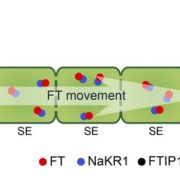
Update: Circadian Clock and Photoperiodic Flowering in Arabidopsis
Plant Physiology, Plant Physiology: Updates, ResearchPlants sense changes in day length (= photoperiod) as a reliable seasonal cue to regulate important developmental transitions such as flowering. Integration of various external light information into the circadian clock-controlled mechanisms enables plants to precisely measure photoperiod changes in…

